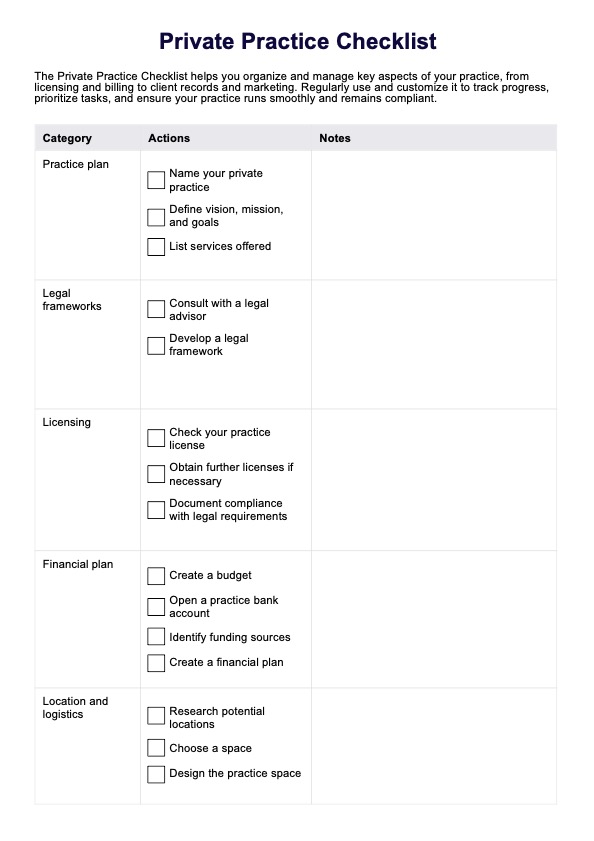To ensure legal compliance, consult a local attorney to navigate healthcare regulations, obtain the appropriate business license, and draft contracts. Securing professional liability insurance is essential, as it protects against legal claims.

Private Practice Checklist
Begin your private practice with our Private Practice Checklist Template. Access it for free and simplify the process!
Private Practice Checklist Template
Commonly asked questions
Financial management is crucial for sustaining your private practice. It includes setting up a dedicated business bank account to track business expenses, planning for taxes, and securing professional liability insurance. Contracting with insurance panels, including health insurance providers, simplifies payment processes and supports billing efficiency.
Using a practice management software streamlines administrative tasks like scheduling, billing, and patient tracking. This checklist suggests integrating software solutions to handle administrative tasks efficiently.
EHR and practice management software
Get started for free
*No credit card required
Free
$0/usd
Unlimited clients
Telehealth
1GB of storage
Client portal text
Automated billing and online payments











